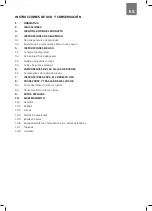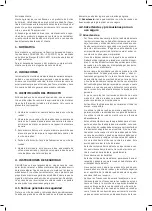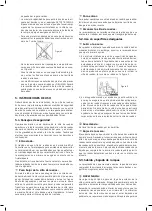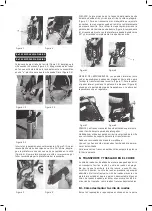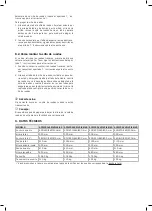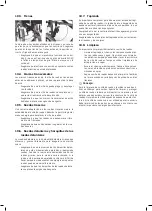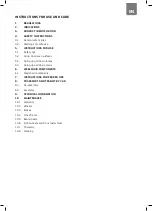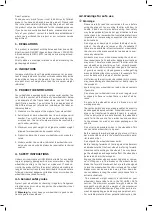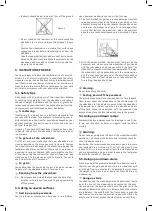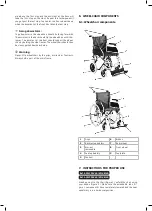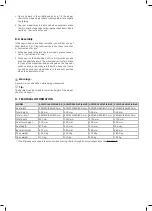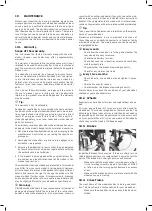
• footrests should be a minimum of 7 cm off the ground.
• Do not stand on the footrests as this could cause the
wheelchair to tip over and injure the occupant. (Figure
1)
• Position the wheelchair on a stable, flat surface and
engage the brakes before transferring to or from the
wheelchair.
• Unauthorised modifications and/or use of parts not su-
pplied by ORLIMAN will invalidate the warranty on this
wheelchair and may lead to occupant injury and/or da-
mage to the wheelchair.
5. INSTRUCTIONS FOR USE
You should learn all about the characteristics of your whe-
elchair. It is of utmost importance to understand the safety
measures in order to do all daily activities in accordance with
your lifestyle. Ask your doctor or therapist
for assistance in
order to learn the most effective techniques for your daily
activities in accordance with your physical possibilities.
5.1. Safety tips
Daily tasks such as getting out of the wheelchair, bending
or reaching for something from the wheelchair will cause a
change of weight distribution and the centre of gravity be-
tween you and your wheelchair. You will need to perform the-
se movements and techniques as described below.
⇢
Transferring:
Transferring in a wheelchair is a difficult manoeuvre. Ask
your physical therapist for assistance in developing your in-
dividual technique. Your transfer possibilities depend on your
physical condition. We advise you to discuss this with your
physical therapist first.
However, if you have sufficient body strength and you want
to transfer to and from the wheelchair, the best way to do so
is as follows:
⇢
To get out of the wheelchair:
First of all, you must make sure that your wheelchair is as
close as possible to the place you wish to move to. Position
the wheels forward and engage the brakes. Swing away the
footplates and place your feet on the ground. You are now in
a position to carry out the task. Shift your weight to the front
of the chair, using the armrests for support if you wish, and
move yourself to the place you wish to move to. You could
use a transfer board, if necessary.
⇢
To get in:
You need to take the same steps to get in as when you want
to get out of the wheelchair, only in reverse order.
⇢
Reaching from the wheelchair:
5.2. We strongly recommend that you seek the help of an
assistant or caretaker if you wish to pick up something
off the ground.
5.3. Using on uneven surfaces
⇢
Getting up onto pavement:
Your caretaker or assistant can help you in two different
ways; however, we advise you to do it the first way.
1. The first method for getting up onto pavement involves
you and your assistant facing forward when doing so. Your
assistant must push the grips towards their body and put
one foot on the stepper (see figure 2.1). A leverage effect
occurs that inclines the wheelchair when the assistant
does the two tasks simultaneously, as indicated in figure
2.
2. With the second method, the assistant first gets on the
pavement and makes sure the wheelchair is positioned
with the rear wheels as close as possible to the kerb. The
wheelchair occupant must then lean backwards. This way,
the wheelchair will tip backwards and the caretaker can
pull the chair onto the pavement. The assistant needs to
make sure that the front wheels are on the pavement be-
fore letting the wheelchair down.
�
Warning:
Do not drive along the kerbs.
⇢
Getting down off the pavement:
The assistant needs to move the wheelchair to face the kerb.
Then, the occupant has to lean back so the assistant can tilt
the wheelchair to find a balance point. When the wheelchair
is balanced, the assistant can move the wheelchair slowly
off the curb. When the wheelchair is off the pavement, the
assistant can place the front wheels back onto the ground.
5.4. Going up and down ramps
We recommend you always examine the slope to see if the-
re are any risks such as holes or irregular surfaces before
moving.
Warning:
Do not carry any weight on the back of the wheelchair whilst
ascending. This changes the balance and increases the chan-
ces of tipping backwards.
Remember the recommendation previously given to ensure
the footrests are a minimum of 7 cm off the ground. One
reason for this is that you need at least this clearance when
you are descending a slope in order to ensure the footplates
do not catch the end of the slope.
5.5. Going up and down stairs
Stairs are one of the greatest obstacles for wheelchair users.
However, you can get up and down stairs in a wheelchair with
a little help from two assistants. The assistants must assess
the weight to be moved up or down the stairs before any
manoevering.
⇢
Going up stairs:
You need to go up the stairs backwards. One assistant should
be at the front of the wheelchair and another at the back.
The assistant at the back must hold onto the grips to tilt the
wheelchair backwards until it is in balance. When the wheels
are in balance, the assistant at the front needs to grab the
side frames. You are now in a position to go up the stairs. The
assistant at the front pushes the side frames up until they
Figure 1



